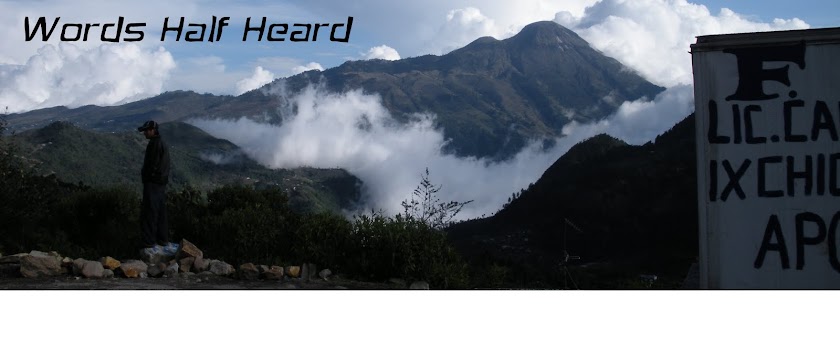I have two earlier books by the same author, Doug Tallamy, and have seen him lecture at Jenkins Arboretum. Somehow I had missed the fact that he had a new best-selling book: Nature's Best Hope: A New Approach to Conservation that Starts in Your Yard.
I've been working on conservation in my yard since I read his Bringing Nature Home back in 2010, and have seen some fruit from that effort. I've planted native shrubs and trees and each season see new species of birds traveling through my yard. This winter, more homebound than usual, I've been delighted with pine siskins and red-breasted nuthatch at my feeders. A hairy woodpecker has been another recent guest.
This new book delves deeper into what Tallamy and others have been learning about how nature works, exploring connections between things like decaying logs, native bees, caterpillars, birds. I'll be reading more closely and dreaming about summer, but one theme has already set me thinking.
In a chapter called "The Importance of Connectivity", Tallamy writes about isolation, fragmentation and the dangers when habitats are splintered and species are divided:
We live in a world in which habitat - places that provide both food and shelter for plants and animals - is so fragmented, and those fragments are so isolated from one another, that they are hemorrhaging species at an alarming rate.
Tallamy talks about building biological corridors, natural passageways, that allow species safe travel from one wild patch to another. My own yard has become such a corridor. The local pileated woodpeckers travel through our trees, sometimes lingering a while, en route from a nearby wild ravine to the older trees around a small park across the street. A lovely red fox travels an alley behind back yards, spending time in our tiny woods. This winter, I've seen it in my front yard bird garden, sneaking up on the flock of mourning doves that gather beneath my feeders.
Tallamy's new book suggests new ways to give safe passage to species struggling in our fragmented world: turn off lights at night, to give moths safer travel. Leave more rotting logs under trees, for native bees and other insects that burrow and breed in decaying wood. Rethink when to cut off seed-heads, so birds have more food sources through cold winters and over-wintering bugs survive. Leave wild edges where creatures can shelter and travel undetected.The book came just as I was thinking about connections in other ways, and what happens when those connections are fragile, or broken.
Our social connections have been shattered by the pandemic. I've been thinking about the people I talked to before and after church, the lunches our church has held for years and the conversations over soup and bread. I've been missing meeting people for coffee, casual lunches, small in-person meetings to plan and think. I've been missing the weekly bird walks I helped organize and lead. I miss hosting young families, teens who need a break, friends who want to come and talk and pray.
But our connections have also been harmed by political division. There care conversations we avoid. Acquaintances we no longer trust. Things feel more tribal than they were, more strained. The common groundwork of what's true, what's right, what serves the common good, seems shredded beyond repair.
Connections keep us healthy and we are all showing symptoms of the strain of isolation. How do we build safe corridors of connection while we wait for vaccines and some return to normalcy? How do we encourage and support each other, despite constraints of social distancing? How do we find common ground, when even simple discussions about illness or vaccines reveal unexpected distance?
I've been busy the past two weeks speaking and organizing in opposition to a PA constitutional amendment that would damage the independence of Pennsylvania's high courts. I've found myself in contact with groups I didn't know and find myself wondering: how do we set down the labels and find our way back from "them" to "us"? How do we build conversation and connection across political divides, regional divides, demographic divides?
I wrote last week from Philippians 1:
And this is my prayer: that your love may about more and more in knowledge and depth of insight, so that you may be able to discern what is best and may be pure and blameless until the day of Christ, filled with the fruit of righteousness that comes through Jesus Christ - to the glory and praise of God.
I am more and more convinced that wholeness might be a good translation for righteousness, and that the mission of wholeness, God's restoration, reaches into every corner of our lives: the food we eat, the landscapes we live in, our political engagement, our interactions with people near and far. We're called to be agents of reconciliation, justice, compassion and grace when those words themselves seem to contradict each other.
That sounds like hard work, but I've found that investment in habitat work is more fun than work, more joy than difficulty. And in odd ways, the same is true with other works of restoration. When we're doing what we're most deeply called to do, we're building connections that heal the world around us, but we're also connecting with our own deepest selves in ways that bring health and joy to us as well.
It's a mystery.
I've mentioned the Porter's Gate work before. Their song We Labor unto Glory illuminates and deepens the mystery:
We labor unto glory
'Til heaven and earth are one;
We labor unto glory
Until God's kingdom comes.


